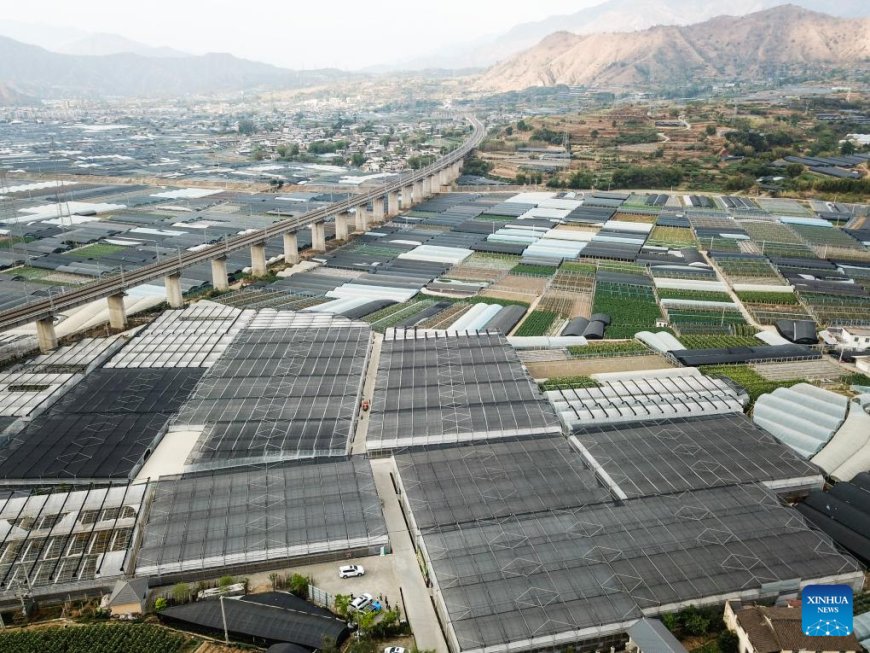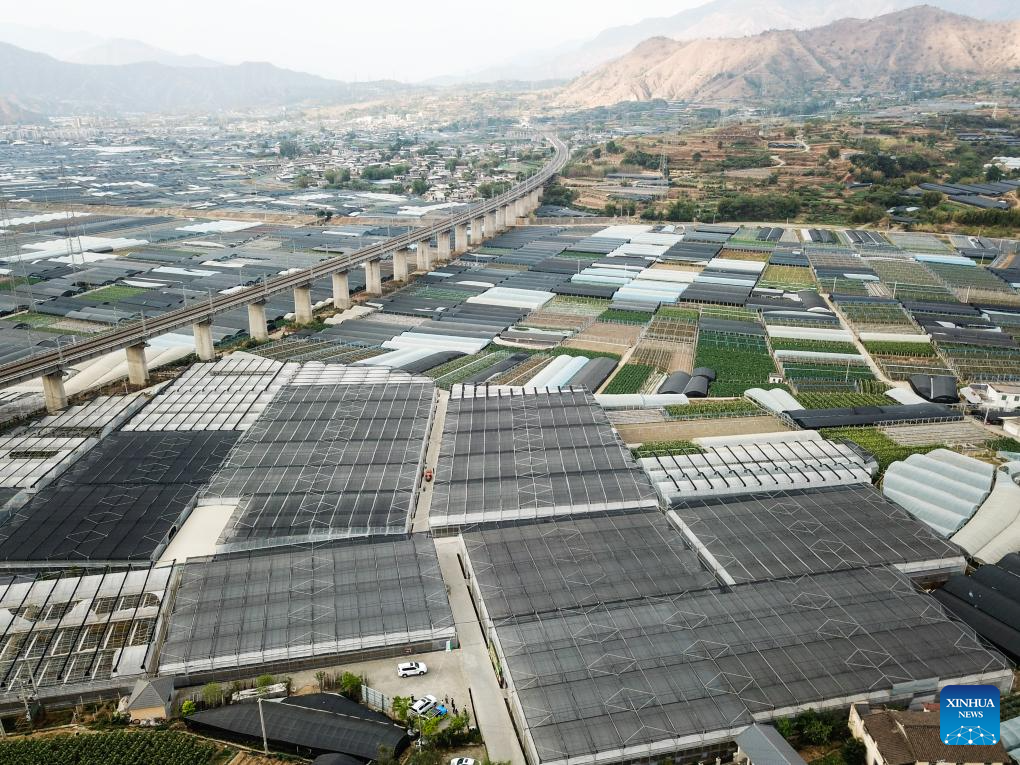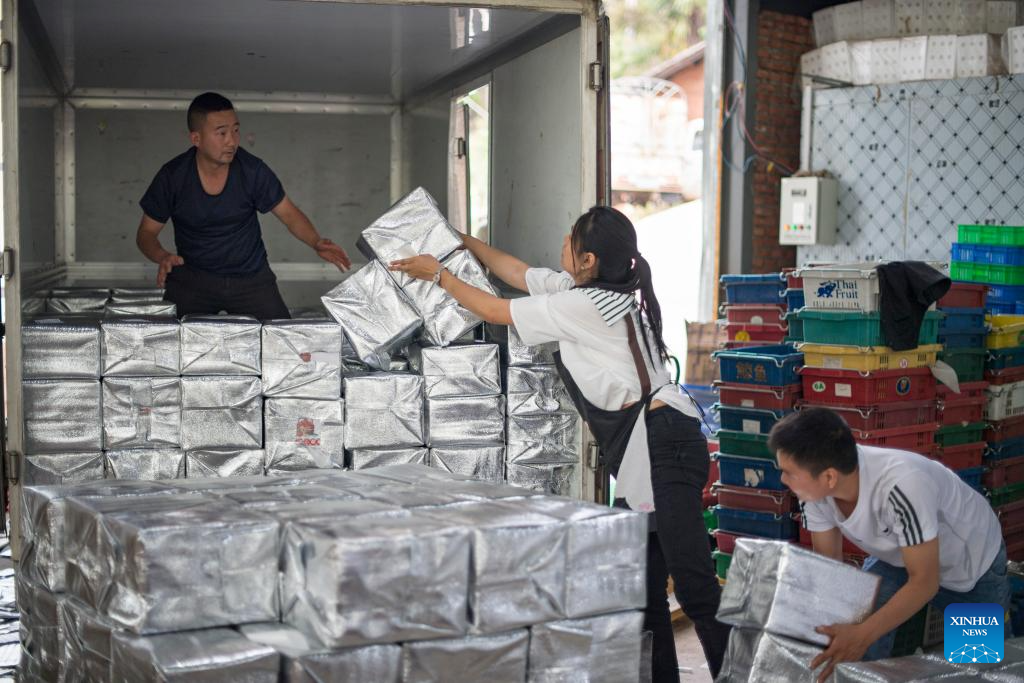Modern science and technology boost agricultural development in SW China
Modern science and technology boost agricultural development in SW China Xinhua

Anning River plain in Miyi County: A Model for Sustainable Agricultural Development

Introduction
Anning River plain, located in Miyi County of Panzhihua City in southwest China’s Sichuan Province, is the second largest plain in the region. It offers a favorable foundation for agricultural development due to its unique natural conditions such as water, soil, light, and climate.
Sustainable Development Goals (SDGs)
- SDG 2: Zero Hunger
- SDG 6: Clean Water and Sanitation
- SDG 13: Climate Action
- SDG 15: Life on Land
National Agricultural Modernization Demonstration Zone
Miyi County is one of the first counties in China to build a national agricultural modernization demonstration zone. In recent years, the county has constructed modern agricultural parks that leverage modern science and technology to improve agricultural practices.
“Three-Level” Agricultural Mode
A unique “three-level” agricultural mode has been designed in Miyi County. This mode involves planting different kinds of crops, fruits, and vegetables at different altitudes, aiming to enhance economic effectiveness.
Agricultural Developments in Miyi County

Modern Agricultural Parks
Miyi County has established modern agricultural parks that take advantage of advanced science and technology. These parks have been instrumental in promoting sustainable agricultural practices.
Cherry Sorting Center
A sorting center for cherries has been set up in Puwei Town of Miyi County. This facility ensures the quality and standardization of cherries produced in the region.
Success Stories in Miyi County

Mango Plantation
A mango plantation in Zhongshan Village of Miyi County showcases the success of sustainable agricultural practices. The county’s efforts in modernizing agriculture have led to increased productivity and improved livelihoods for farmers.
Blueberry Planting Base
A blueberry planting base in Puwei Town is another example of Miyi County’s achievements in sustainable agriculture. The county’s focus on modern techniques and diversified crop cultivation has resulted in the successful production of high-quality blueberries.
Terraced Fields
Miyi County’s terraced fields demonstrate the effective utilization of land resources and the preservation of natural ecosystems. These terraces not only enhance agricultural productivity but also contribute to the conservation of the environment.
Conclusion
Miyi County’s agricultural developments in the Anning River plain serve as a model for sustainable agricultural practices. By aligning with the Sustainable Development Goals (SDGs), the county has achieved significant progress in ensuring food security, promoting environmental sustainability, and improving the livelihoods of local communities.
SDGs, Targets, and Indicators
SDGs Addressed:
- SDG 2: Zero Hunger
- SDG 9: Industry, Innovation, and Infrastructure
- SDG 11: Sustainable Cities and Communities
- SDG 13: Climate Action
- SDG 15: Life on Land
Specific Targets:
- Target 2.3: By 2030, double the agricultural productivity and incomes of small-scale food producers, in particular women, indigenous peoples, family farmers, pastoralists, and fishers, including through secure and equal access to land, other productive resources and inputs, knowledge, financial services, markets, and opportunities for value addition and non-farm employment.
- Target 9.4: By 2030, upgrade infrastructure and retrofit industries to make them sustainable, with increased resource-use efficiency and greater adoption of clean and environmentally sound technologies and industrial processes, with all countries taking action in accordance with their respective capabilities.
- Target 11.3: By 2030, enhance inclusive and sustainable urbanization and capacity for participatory, integrated, and sustainable human settlement planning and management in all countries.
- Target 13.1: Strengthen resilience and adaptive capacity to climate-related hazards and natural disasters in all countries.
- Target 15.1: By 2020, ensure the conservation, restoration, and sustainable use of terrestrial and inland freshwater ecosystems and their services, in particular forests, wetlands, mountains, and drylands, in line with obligations under international agreements.
Indicators:
- Indicator 2.3.1: Volume of production per labor unit by classes of farming/pastoral/forestry enterprise size.
- Indicator 9.4.1: CO2 emission per unit of value added.
- Indicator 11.3.1: Ratio of land consumption rate to population growth rate.
- Indicator 13.1.1: Number of deaths, missing persons, and directly affected persons attributed to disasters per 100,000 population.
- Indicator 15.1.1: Forest area as a proportion of total land area.
Analysis:
The article discusses the agricultural development in Miyi County, China, and highlights the use of modern science and technology in building modern agricultural parks. The county has implemented a “three-level” agricultural mode, where different kinds of crops, fruits, and vegetables are planted in different altitudes to improve economic effectiveness. This agricultural development aligns with several Sustainable Development Goals (SDGs) and their respective targets.
SDG 2: Zero Hunger
The agricultural development in Miyi County contributes to SDG 2 by increasing agricultural productivity and incomes of small-scale food producers. This is achieved through the implementation of modern science and technology, which improves the efficiency and effectiveness of agricultural practices.
SDG 9: Industry, Innovation, and Infrastructure
The use of modern science and technology in building modern agricultural parks in Miyi County aligns with SDG 9. This development promotes innovation in agriculture and contributes to the upgrade of infrastructure and adoption of sustainable technologies in the industry.
SDG 11: Sustainable Cities and Communities
The agricultural development in Miyi County contributes to SDG 11 by enhancing sustainable urbanization and human settlement planning. The implementation of modern agricultural practices and the establishment of agricultural parks promote sustainable land use and contribute to the overall sustainability of the county.
SDG 13: Climate Action
The agricultural development in Miyi County aligns with SDG 13 by strengthening resilience and adaptive capacity to climate-related hazards. The use of modern science and technology allows for more efficient and sustainable agricultural practices, which can help mitigate the impacts of climate change on agricultural production.
SDG 15: Life on Land
The agricultural development in Miyi County contributes to SDG 15 by promoting the conservation, restoration, and sustainable use of terrestrial ecosystems. The establishment of agricultural parks and the implementation of sustainable agricultural practices help protect and preserve the natural resources, such as water, soil, and biodiversity, in the Anning River plain.
Table: SDGs, Targets, and Indicators
| SDGs | Targets | Indicators |
|---|---|---|
| SDG 2: Zero Hunger | Target 2.3: By 2030, double the agricultural productivity and incomes of small-scale food producers. | Indicator 2.3.1: Volume of production per labor unit by classes of farming/pastoral/forestry enterprise size. |
| SDG 9: Industry, Innovation, and Infrastructure | Target 9.4: By 2030, upgrade infrastructure and retrofit industries to make them sustainable. | Indicator 9.4.1: CO2 emission per unit of value added. |
| SDG 11: Sustainable Cities and Communities | Target 11.3: By 2030, enhance inclusive and sustainable urbanization and capacity for participatory, integrated, and sustainable human settlement planning and management. | Indicator 11.3.1: Ratio of land consumption rate to population growth rate. |
| SDG 13: Climate Action | Target 13.1: Strengthen resilience and adaptive capacity to climate-related hazards and natural disasters. | Indicator 13.1.1: Number of deaths, missing persons, and directly affected persons attributed to disasters per 100,000 population. |
| SDG 15: Life on Land | Target 15.1: By 2020, ensure the conservation, restoration, and sustainable use of terrestrial and inland freshwater ecosystems and their services. | Indicator 15.1.1: Forest area as a proportion of total land area. |
Behold! This splendid article springs forth from the wellspring of knowledge, shaped by a wondrous proprietary AI technology that delved into a vast ocean of data, illuminating the path towards the Sustainable Development Goals. Remember that all rights are reserved by SDG Investors LLC, empowering us to champion progress together.
Source: english.news.cn

Join us, as fellow seekers of change, on a transformative journey at https://sdgtalks.ai/welcome, where you can become a member and actively contribute to shaping a brighter future.







